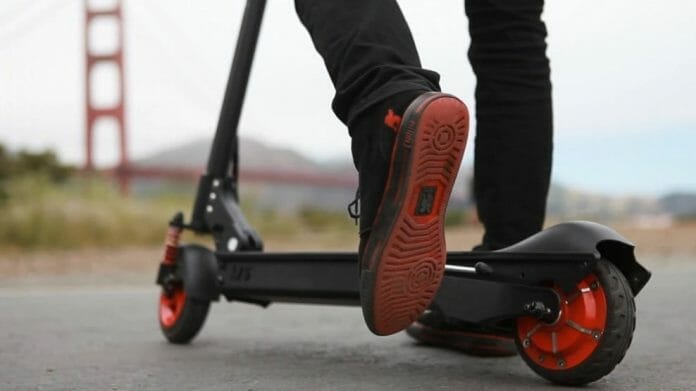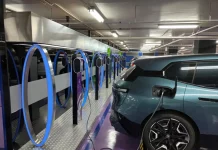Forget driving your car. Forget riding a bike. You can even forget walking. When it comes to getting around city centres these days, rentable electric scooters are all the rage – at least judging by some North American cities.
Thousands of city dwellers in metropolises such as Washington are ditching their cars and public transport every day for battery-powered scooters they can rent out from operators like Lime and Bird.
Anyone who wants to rent a scooter out can download an app onto their smartphone to unlock one. Several different businesses are already offering the scooters in US cities, each charging around 2.50 dollars for 10 minutes.
“I mostly use a scooter for short distances, to get to from the subway to the office,” says Robert Price from Washington.
Indeed, reaching speeds of up to 24 kilometres per hour (km/h) and weighing around 11 kilograms, the scooters are designed mainly for shorter trips, and can cover between 11 and 23 kilometres on a full charge.
It’s not just commuters, but also tourists that like the idea of buzzing around on scooters. “The whole concept is cool,” says John Lawrence, a British-German tourist visiting Washington.
Users like having an alternative to buses and cars. The scooters allow them to avoid traffic and free them from having to find a parking space. And when you’ve reached your destination, you just park the scooter on the side of the path for the next person to rent it out.
Once you’ve unlocked the scooter with your smartphone, two or three pushes with your foot and you’re on your way. Then, all you need to keep yourself moving is a lever on the handlebars. Once you’re done, there’s a handbrake and kickstand so it doesn’t fall over.
“Today, 40 per cent of car trips are less than two miles long,” Travis VanderZanden, founder and chief executive of Bird, one of the biggest electric scooter companies, recently told the Washington Post.
“Our goal is to replace as many of those trips as possible so we can get cars off the road and curb traffic and greenhouse gas emissions.”
Now that companies like Bird and Lime have taken off in several North American cities, the e-scooters also look set to conquer European cities like Vienna and Paris.
“We’re already sharing new mobility options with citizens in Berlin and Frankfurt by making our bicycles and electric bicycles available,” says Gauthier Derrien from Lime.
The phenomenon has been broadly been welcomed in the US. Around 70 per cent of the population see electric scooters as an improvement for cities and a supplement to public transport, according to a survey of 7,000 people conducted by pollster Populus.
The scooter companies also offer between 5 and 20 dollars to anyone willing to collect a scooter, charge it overnight and put it back in a popular spot.
But not everyone is happy about the rapid rise of the new form of mobility. One problem is that once people have finished with the scooters, they just leave them anywhere. In San Francisco, scooters are being found dumped in the bay, and even in trees.
“It’s annoying when they stand in the middle of the sidewalks or block exits,” says Zhihao Yun, a student from China.
When on the go, they can also pose risks for both riders and pedestrians. Riders are supposed to stay on the road, but many also choose to go on the pavement, against the advice of operators.
People whizzing past you at 20 km/h on the pavement is bound to be disconcerting for many people.
There have also been teething problems with regulation. In March 2018, operators spread hundreds of scooters across San Francisco overnight for a big launch event – but in June they had to collect them all back up again while city authorities decided on regulation.
Even in the US capital, regulation on proper use is still lacking, which is why a pilot project has been extended for several months to collect more data and work on problems.
Cities in Europe are experiencing similar troubles, albeit with rented bicycles, which are increasingly crowding inner city pavements in cities, where they can be parked virtually anywhere.
Nevertheless, the idea remains broadly popular with the public and politicians. A pilot project in the US capital has been pushing since September 2017 to get more people to rent bicycles, and more recently also electric scooters.
The authorities have documented some 625,000 journeys with electric bicycles and scooters. In May 2018 alone, around 55,000 people used these new means of transport for 140,000 trips.
Lime, for one, believes the scooters are here to stay, describing them as “smart, affordable mobility.”









